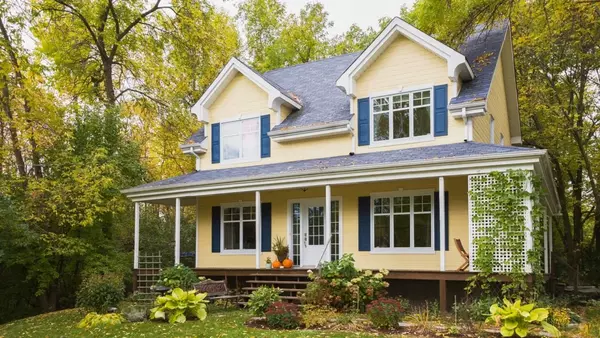6 Tips for Finding a Pet-Friendly Rental


Many of us think of our pets as family, and just like not every home is a good fit for our family, not every home is a good fit for our pets. Is there enough space? Can you afford the pet rent? What about a yard? Even in the dog-friendliest of cities, where the majority of listings are pet-friendly, these are factors that can distinguish the ideal rental from all the others. And depending on where you live, how many pets you have, and what breeds they are, finding the right fit isn’t always a walk in the park. Landing the perfect home for both you and your pet is possible with the right preparation and paperwork. Try these suggestions for finding a pet-friendly rental to help streamline your search and application process.
1. Start your search as soon as possible
The hard truth is that if you have pets — particularly a large dog — it may take longer to find a suitable rental. Some landlords have a strict no-pet policy. In this case, their preference is to eliminate the risk that a dog or cat damages property or creates excess noise for the neighbors. So with potentially fewer options to choose from, give yourself extra time to search if you’re on a deadline. Begin by narrowing your search to pet-friendly rentals. On Zillow, this is designated by size and type of pet allowed (see more tips on searching for rentals on Zillow). Keep in mind that if a listing doesn’t say anything about pets — whether they’re allowed or whether they aren’t — you may not want to discount the rental. Consider reaching out to the landlord or property manager in this case to clarify their pet policy once you’ve browsed all your pet-friendly options. Also, consider looking at single-family properties. Landlords of individually-owned properties may be more likely to be flexible and accept pets on a case-by-case basis. Using keywords like “pet friendly” or “dog friendly” in your search can help narrow down rental listings as well.
2. Set a budget
You’ll want to factor into your search the various pet-related costs that you may incur on top of your rent. Many landlords charge either a one-time pet deposit or a one-time pet fee; they are different things. The former is refundable. You should get your pet deposit back if your landlord decides the pet didn’t cause significant damage to the home. A pet fee, however, is non-refundable. Pet fees are typically requested by the landlord in order to cover any potential cleaning or repairs needed after you move out. Pet deposits and fees vary, but typically range from $50 going up to several hundred dollars. You might also encounter pet rent at some properties. This is either an annual or monthly fee that’s added to your rent. Some rentals require you pay both pet rent and a pet deposit or fee. Some states or cities have laws that limit how high these amounts can be, so check if this applies where you’re looking to live. If you have a dog, especially a large dog, you may be required to pay an additional pet deposit, pay extra for insurance that covers your dog’s breed or even rent on a month-to-month basis until your pooch earns your landlord's approval.
3. Ask for a conversation
If you have your eye on a particular rental house or apartment complex and you’re unsure of their pet policy or think there may be flexibility, ask upfront if they allow pets. If you get a “no” and you’re pretty set on calling this place home, ask if you can discuss things. You might have success convincing the owner of single family rental homes or smaller complexes to change their minds, especially if they have pets of their own. Always lean on talking with the landlord to arrive at a solution — and never hide the fact that you’ll be living with a pet in the rental.
4. Write a pet resume
It might sound surprising, but submitting a resume for your pet could sway your landlord — some places even require them. This document can attest to your pet’s good behavior. Have they completed any training courses? How are they with kids? Additionally, to prove that you’re a responsible pet owner, have your pet’s current vaccinations and license available to share with the landlord. And a cute photo might just win over a doubtful property owner. If the circumstances allow, consider offering to bring your pet to meet the property owner. This could give you an opportunity to show how well-trained your pet is and put your potential future landlord’s mind at ease.
5. Contact your local pet organizations for pet-friendly rental directories
Local pet organizations often have a list of pet-friendly apartments in your area. The Humane Society has a list of tips for finding rental housing with pets, information about pet-owner rights and tips for keeping both your pet and landlord happy, once you land your rental. You could also lean on your neighbors and fellow dog owners. Check Facebook groups, or sites like NextDoor and Reddit to see what leads people might have. If you have a particularly large dog, or one that’s classified as an aggressive breed, you may have an even harder time finding a rental that’s right for the whole family. Your local animal shelter, breed rescue or advocacy group likely has a list of apartment communities that will accept your specific breed. For example, the website My Pit Bull is Family has a list of pit bull-friendly rental housing providers in each state.
6. Review your lease before signing
If you wind up finding a listing that seems like a good fit, that’s a huge task off your plate. The property manager says they’ll accept your dog or cat, and the rent and fees are within your budget. But don’t let your excitement rush you into a lease. Read your lease agreement over and see if there are size restrictions that would increase your pet fee — or disqualify you from living there altogether. It should also spell out if said fee or rent is per pet, and be sure you understand what rules you and your pet have to follow. If you have a question or were told something that isn’t mentioned in the lease, ask your landlord to clarify. Be sure to document any fees and other pet-related factors in writing if they’re not already included. This can cover you in case anything unexpected happens that you’d previously discussed with your landlord.
Recent Posts

Discover Luxurious Living in Hoschton: A Closer Look at 173 Tennessee Walker WAY

A Complete Guide to A Home Equity Line of Credit (HELOC)

Government Home Loans: Make Homeownership Possible

10 Tips for Organizing Your Whole House

What To Know About Smart Home Tech

8 Value-Adding Home Improvements You Can Do for $1,000 or Less

Health and Wellness Upgrades That Make Your Home Better

How to Find an Apartment: 11 Ways to Beat the Hot Rental Market

5 Things to Look for in a Rental Listing

6 Tips for Finding a Pet-Friendly Rental
